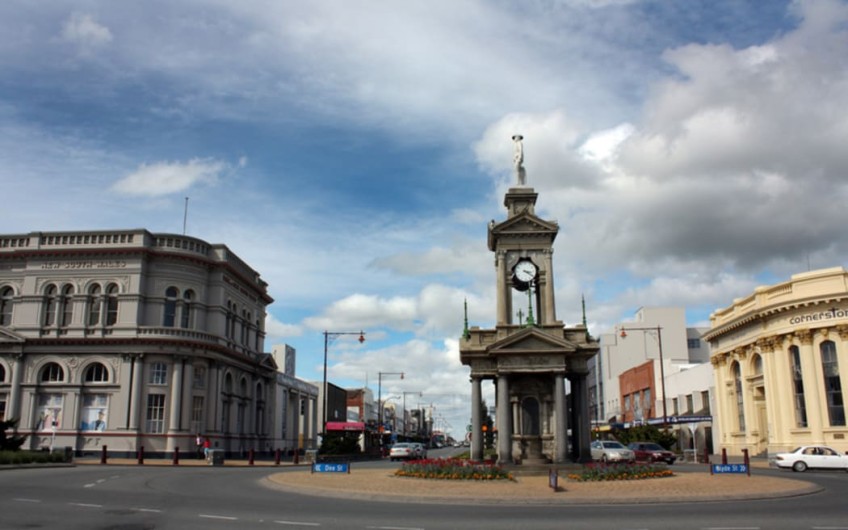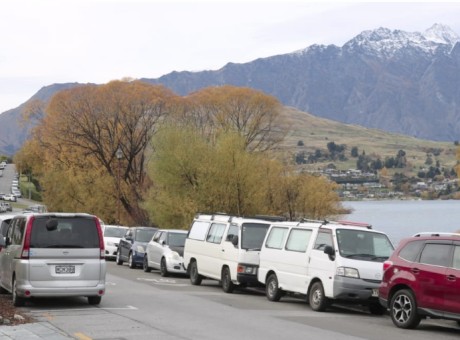Air pollution: Invercargill revealed as deadliest centre - study

New statistics show Invercargill is the deadliest place in New Zealand when it comes to air pollution - more dangerous than larger cities.
Invercargill may need to rethink its air pollution strategy, Environment Southland says. Photo: SUPPLIED / ICC
It shows air pollution kills about 3300 people each year - with vehicle emissions responsible for two thirds of those, nearly 10 times the road death toll.
Check out this map to see which areas have the highest air pollution
The study shows air pollution is sending more than 13,000 people to hospital each year - and costing the country more than $15 billion.
Shock in Southland
Invercargill topped the death-rate rankings for air pollution from vehicle exhaust and domestic fires and industry combined.
It was followed by Christchurch city, then Waitaki, Timaru and Masterton districts.
Invercargill's position shocked Environment Southland chair Nicol Horrell.
He said it may need to rethink its air pollution strategy, and get more help from the government and health officials.
"It is quite stunning, quite staggering actually and we need a coalition to try and get some interventions which can actually improve that."
Dunedin city has the second highest traffic pollution death rate, behind Christchurch, and has the sixth deadliest overall rate.
Older people were among the most vulnerable to sickness from toxic gas.
Otago Grey Power president Jo Millar said Dunedin was choked with cars, leaving people choking on exhaust fumes.
"I quite frankly don't go anywhere now without a mask on and that purely and simply is because I'm quite convinced then I'm not going to pick anything up from fumes from cars, traffic, whatever it is.
"And the trucks that go backwards and forwards are incredible."
She said the city's bus network was far too slow meaning most people used their cars to get around.
"Nobody uses the buses down here, they all travel back and forth in cars."
Invercargill City recorded 219 premature deaths per 100,000 people aged 30 and over from air pollution in 2016, while Christchurch had 206 deaths per 100,000 people.
There are too many cars and trucks on the streets in Dunedin, Otago Grey Power's president says. Photo: supplied
Impact on hospitalisation rates
For the first time the study was able to measure the health impacts of nitrogen dioxide, a toxic gas from petrol and diesel engines.
Scientists were startled to discover its massive impact - tripling Aotearoa's air pollution hospitalisation statistics.
Not surprisingly cities had the worst death rates from traffic exhaust.
Christchurch topped the figures, then Dunedin, Napier, Nelson and Invercargill.
Christchurch residents were almost three times more likely to die prematurely from air pollution than those living in Wellington city - which was way down the list.
Tauranga, Hastings, Hamilton, Auckland, Whanganui and Horowhenua also had high vehicle pollution death rates.
NIWA air quality scientist Dr Ian Longley said those living near busy roads were the worst affected.
"If [you] live in a quiet residential street, there is some traffic pollution around, but if you live next to a major road the level will be double.
"Particularly if you live near roads which have a lot of congested traffic or those where there are a lot of clusters of tall buildings."
Greater urgency for cleaner vehicle fleet
Associate Environment Minister Phil Twyford said the government has brought in policies like the clean car standard and discounts to electrify the vehicle fleet, and the study's findings gave that even more urgency.
But it also raised some thorny questions about how to manage other plans to cut emissions - such as moves to build up along transport corridors in cities to reduce the carbon footprints of residents.
"Access to clean air I think also has to be part of that thinking.
"And I think that will be part of the mix of things that we're looking at when we're setting good urban design standards for the new system."
Project lead Dr Gerda Kuschel said small reductions in pollution could make a big difference.
"Every little bit that you can do to improve it, like even improving concentrations by 5 percent can make a massive difference to the health burden from air pollution so there is hope."
The study used data from 2016 and car ownership rates have gone up since.






















